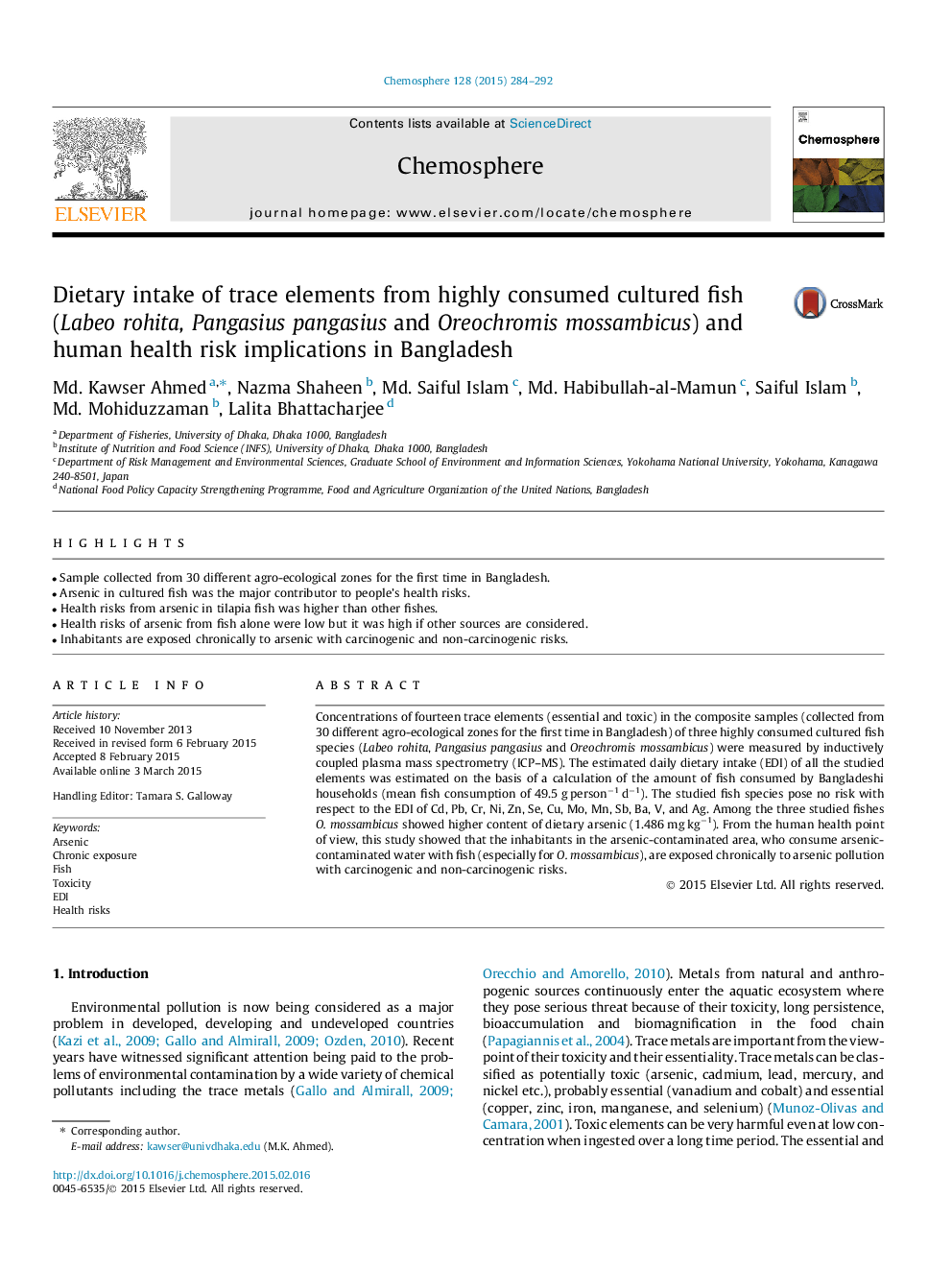| Article ID | Journal | Published Year | Pages | File Type |
|---|---|---|---|---|
| 4408501 | Chemosphere | 2015 | 9 Pages |
•Sample collected from 30 different agro-ecological zones for the first time in Bangladesh.•Arsenic in cultured fish was the major contributor to people’s health risks.•Health risks from arsenic in tilapia fish was higher than other fishes.•Health risks of arsenic from fish alone were low but it was high if other sources are considered.•Inhabitants are exposed chronically to arsenic with carcinogenic and non-carcinogenic risks.
Concentrations of fourteen trace elements (essential and toxic) in the composite samples (collected from 30 different agro-ecological zones for the first time in Bangladesh) of three highly consumed cultured fish species (Labeo rohita, Pangasius pangasius and Oreochromis mossambicus) were measured by inductively coupled plasma mass spectrometry (ICP–MS). The estimated daily dietary intake (EDI) of all the studied elements was estimated on the basis of a calculation of the amount of fish consumed by Bangladeshi households (mean fish consumption of 49.5 g person−1 d−1). The studied fish species pose no risk with respect to the EDI of Cd, Pb, Cr, Ni, Zn, Se, Cu, Mo, Mn, Sb, Ba, V, and Ag. Among the three studied fishes O. mossambicus showed higher content of dietary arsenic (1.486 mg kg−1). From the human health point of view, this study showed that the inhabitants in the arsenic-contaminated area, who consume arsenic-contaminated water with fish (especially for O. mossambicus), are exposed chronically to arsenic pollution with carcinogenic and non-carcinogenic risks.
